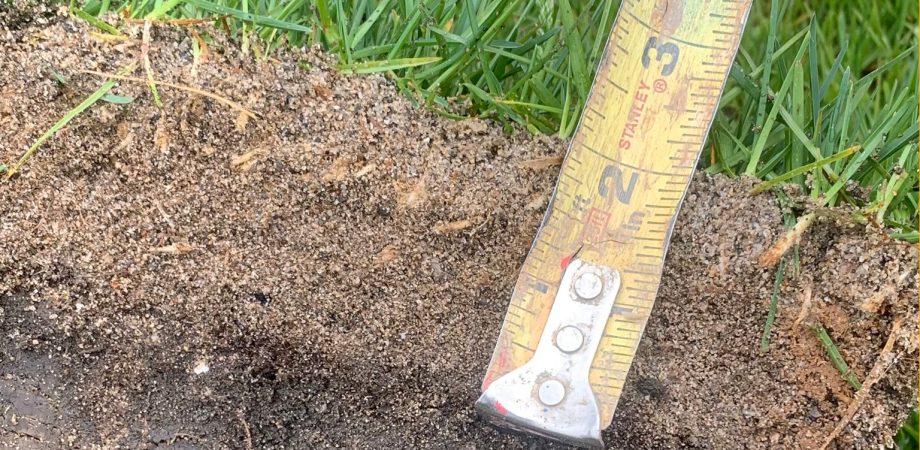Rootzones: Know Your Options

Some athletic field managers don’t know they have options when it comes to the rootzone of their field. Or perhaps they know they have options but don’t know what they are. Field managers may be surprised to learn there are several unique choices for the rootzone.
Native soil
Many public parks, high schools, and others on a budget choose to establish natural grass in the native soil that’s already on site. They might grade the soil first, but otherwise, there’s not much preparation for planting in native soil. This saves time and money but often compromises the rootzone composition. Native soil tends to be prone to compaction and drainage issues.
Each surface is different, however. The best way to decide if native soil is a viable option for your field’s rootzone is to complete two soil tests: an undisturbed core sample test and a topsoil quality test. With both of these results, you can determine the native soil composition and surface grade. Use this information to decide if the native soil will be sufficient for your field needs.
Modified Native Soil
If soil tests reveal issues, it’s still possible to work with the native soil. You can modify the soil by adding sand or organic matter to the rootzone. The amount and type of additives will depend on the results of both soil tests mentioned above. Compare these results with your field needs, and you may be able to modify the native soil to meet your goals.
Spartan Cap
While modified native soil is a solution for some fields, it can cost more than the spartan cap option. The spartan cap is achieved by adding drain lines and liberally topdressing the entire playing surface with sand. The spartan cap is considered an excellent low-cost alternative to native soil.
Sand Cap
Another simple option is the sand cap rootzone. This option also uses subsurface drain lines, installed at a depth of six inches. It provides similar drainage performance to a synthetic turf rootzone.
USGA
The USGA rootzone, developed by the United States Golf Association, is considered the best option for natural grass. It employs drain lines installed about a foot deep with a layer of gravel on top of them and up to a foot of sand above the gravel. A USGA rootzone can drain more than 15 inches of water per hour, making it virtually “rainout-proof.” Most high-level sports fields have a USGA rootzone.
Some field managers take their USGA rootzone up a notch by stabilizing it. In conjunction with the sandy rootzone, the stabilizing system makes for a durable field that performs comparably to synthetic.
Gravel
A gravel rootzone is only an option for synthetic turf fields. With subsurface drainage under six inches of gravel, this rootzone meets the specific needs of a synthetic field.
Talk to your local ATS sales representative today to determine which rootzone is right for you.







